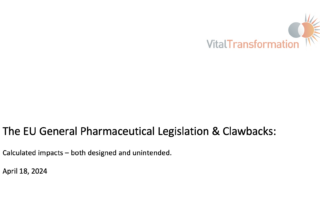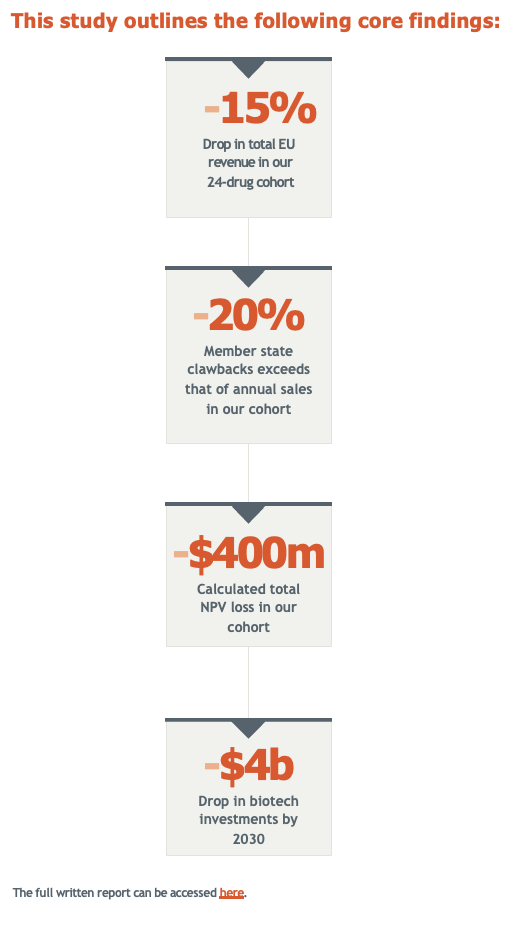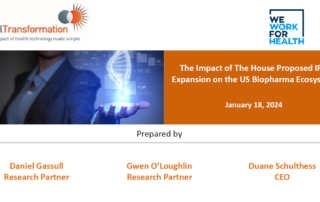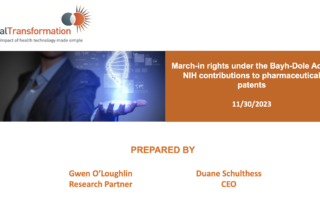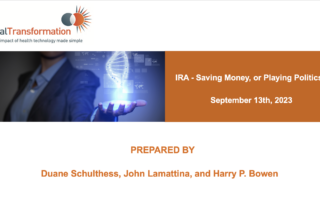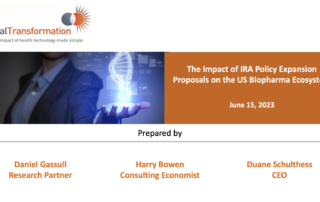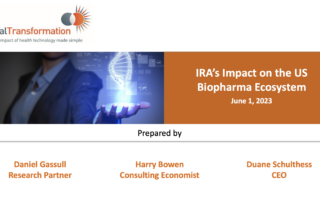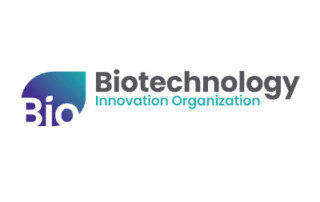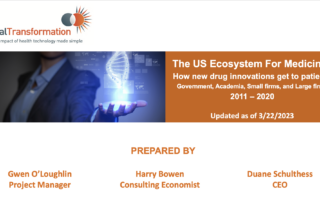The Impact of The House Proposed IRA Expansion on the US Biopharma Ecosystem
Vital Transformation (VT) modeled the impacts of the drug pricing provisions of the Inflation Reduction Act, with the expansions proposed by Representative Frank Pallone, Jr. (NJ-06) called the, “H.R. 4895: Lowering Drug Costs for American Families Act”, which would impose government price setting for up to 50 selected Medicare Drugs starting in 2029 and expand those negotiated prices to the commercial market.
We modeled the impacts on industry revenues, future R&D investments for the Medicare aged population, and lost innovation including industry jobs.
We estimate a loss of 136,000 – 216,000 direct biopharmaceutical industry jobs and 678,000 – 1,076,000 indirect jobs across the U.S. economy if H.R. 4895 were to be implemented.
We estimate that the expanded government price setting could result in roughly 134 fewer FDA approvals of new medicines treating primarily the Medicare aged population over a ten-year period:
- Impacts will be felt most heavily in many areas of unmet need, including in rare disease, oncology, neurology, and infectious disease targeting those over 65 years of age.
- H.R. 4895 impacts the entire commercial market at the point of negotiated prices entering Medicare.
- The most significant ecosystem impacts would be concentrated primarily in CA and MA.
- Had the drug pricing provisions of the House Bill H.R. 4895 been in place prior to the development of today’s top-selling medicines, we estimate that 76 of the 198 therapies we identified as selected for Medicare price setting would likely have not been developed.
March-in rights under the Bayh-Dole Act & NIH contributions to pharmaceutical patents
Industry is the dominant source of innovation for novel FDA approved medicines; industry funding for novel patented therapies approved by the FDA from 2011 – 2020 was $44.3 billion, compared to the $276 million the US government contributed to patented drugs that are subject to Bayh Dole. Relevant to this, the previously published report by VT found that over the 20 years leading up to FDA approval of 18 innovative new therapies, the funding contribution from industry to the development of these therapies was 66 times higher than the public funding from all linked NIH grants.
Research and development investments are a significant risk to the pharmaceutical industry and their investors as not all assets result in a marketed product. The high rate of failure in drug development underscores the challenges and risks associated with bringing new treatments to patients.
92% of the therapies in our cohort have no mechanism of action or composition of matter patents with a government interest statement or federally funded co-development program in connection to them.
99% of the therapies in our cohort cannot be marched-in upon, as the key patents studied do not cover the entire asset’s intellectual property. There are only 5 out of 361 pharmaceutical products in which all available MoA and CoM patents include a government interest statement and could be subject to march-in rights.
Enacting march-in rights to control prices will create uncertainty and increase risk for inventors based upon previous experiences with fair pricing requirements for NIH CRADAs:
- Industry, venture capital will avoid investing in commercializing academic inventions and partnerships with the NIH will plumet
- US biopharma productivity will drop significantly, providing an opportunity for competing foreign biopharma markets to expand, with a high potential for industry to relocate their enterprises
IRA – Saving Money, or Playing Politics?
IRA’s drug negotiation choices seem to be much more about the 2024 election than Medicare cost savings in 2026.
By Duane Schulthess, John Lamattina, and Harry P. Bowen
September 13th, 2023
On Tuesday August 29th, the Biden Administration and the Centers for Medicare & Medicaid Services (CMS) announced the first 10 drugs to be selected as part of their signature legislation, the Inflation Reduction Act (IRA).
The linchpin of the IRA has been to lower total Medicare costs. The text of the IRA states clearly that the drugs to be chosen for negotiation are those, “… drugs with the highest total expenditures being ranked the highest.” This language is completely unambiguous; drugs with the greatest total expenditures for taxpayers are the ones to be negotiated.
The IRA also includes provisions that drugs soon to be subject to generic or biosimilar competition are excluded from negotiation. This is logical as once a drug loses its patent exclusivity its price falls rapidly.
Our firm, Vital Transformation (VT), has been at the center of the IRA debate for well over a year. Given the IRA’s clear objective to contain taxpayer costs, we conducted economic modeling which simulated the impact of 10 years of IRA negotiations on Medicare spending and biopharmaceutical company revenues.
The Impact of IRA Policy Expansion Proposals on the US Biopharma Ecosystem
Vital Transformation (VT) modeled the impacts of the drug pricing provisions of President Biden’s 2024 Budget, now proposed by Senators Klobuchar and Welch as the “Smart Prices Act (SPA)”, which would impose government price setting for selected Medicare drugs at only 5 years after initial FDA approval.
We modeled the impacts on industry revenues and future R&D investments and estimated future lost innovation impacts including the impact on industry jobs.
We estimate a loss of between 146,000 – 223,000 direct biopharmaceutical industry jobs and a total of 730,000 – 1,100,000 U.S. jobs across the economy if the proposed IRA expansion were to be implemented.
Looking forward, we estimate that the expanded government price setting could result in roughly 230 fewer FDA approvals of new medicines over a ten-year period, once the impacts are fully reflected in the pipeline.
-> Impacts will be felt most heavily in many areas of unmet need, including in rare disease, oncology, neurology, and infectious disease.
->The most significant ecosystem impacts would be concentrated primarily in CA, MA, and NY.
Had the drug pricing provisions of the SPA been in place prior to the development of today’s top-selling medicines, we estimate that 82 of the 121 therapies we identified as selected for price setting would likely have not been developed.
IRA’s Impact on the US Biopharma Ecosystem
Vital Transformation (VT) modeled and estimated the impacts of the Inflation Reduction Act’s (IRA) pricing provisions for a cohort of the top 200 Part B and D drugs by CMS spend, resulting in 92 drugs impacted by IRA in the next 10 years, which are produced, collectively, by 41 biopharmaceutical companies.
Had the IRA been in place beginning in 2014, we estimate the reductions in revenue on the impacted drugs to be up to 40%. Because of this, between 24 and 49 therapies currently available today would most likely not have come to market and therefore not available for patients and their providers.
Looking forward, we estimate that because of the IRA pricing provisions, the substantial reduction in revenue will significantly narrow investment opportunities. Conservatively, as many as 139 drugs over the next 10 years are at risk of not being developed at all.
Both biologics and small molecule drugs are impacted, with an average reduction in revenue per therapy of $4.9 billion and $4 billion respectively.
IRA provides a negotiation exemption for orphan drugs that treat only one rare disease. This disincentivizes investments in orphan drugs and areas of high unmet patient need as the broader indications will provide a superior return on investment, as much as $500 million over three years.
Based on two impact scenarios, we estimate a loss of between 66,800 - 135,900 direct and 342,000 - 676,000 indirect jobs in the U.S. biopharma ecosystem.
BIO 2023: A Price Control Odyssey : The Inflation Reduction Act’s Effects on the Innovation Ecosystem
The Inflation Reduction Act (IRA) contains some of the most significant changes to prescription drug pricing, reimbursement, and access since the Affordable Care Act was enacted over a decade ago. A new study by Vital Transformation, a health care economics consultancy, looks at the economic impacts on the innovation ecosystem and access to new therapies, with a particular focus on drug discovery and rare disease. As the federal government implements the price control provisions of the IRA, biotech hubs like Boston, Massachusetts- home to a significant number of established and emerging biotech companies- will bear the brunt of those impacts as they manage R&D pipelines.
Panelists, amongst whom Duane Schulthess, CEO of Vital Transformation, will discuss the studies findings, and look at the chilling effects on venture funding, orphan drug impacts, and reduced treatments reaching patients.
Wednesday, June 7, 2023, 1:45 PM - 2:45 PM (EDT) - Session Room 254B (click Read More for the session link)
And if you can't attend the session but are keen to discuss this topic, come and visit the Vital Transformation booth at the BIO Exhibition, we're in booth 1180!
The US Ecosystem for Medicines. How new drug innovations get to patients.
The dominance of American biopharma in global innovation has increased since Kneller’s publication in 2010; the USA is responsible for 95% of the increase of 111 total FDA approvals since 2010.
The diversified external R&D ecosystem, emerged since 2008, has led to an increase of more than 160% in the value of external R&D partnership in Europe and the US.
The value of Europe’s partnership deals has have remained stable since 2011, whereas the median value of partnership agreements in the US has trebled.
120 of 363 total FDA approvals between 2011 and 2020 were developed by US based small companies with less than $500 mil in revenue.
The NIH’s CRADA and Intermural grants were directly responsible for the creation of 4 of the 363 new drugs in our cohort; US academic institutions created 10% of all indigenously originated IP.
While most drugs are created by small biotech companies in the cohort, large companies step in after FDA approval with development, marketing, and scale; this appears to increase the efficiency of the Biotechnology ecosystem.
The majority of biologics undergo priority review and target orphan indications at the time of FDA approval between 2011-2020.
The NIH’s role in drug discovery, while vital, is not directly responsible for the development of new therapies.
Calculating the Value and Impact of Accelerated Approvals: Final Findings
• The Accelerated Approval (AA) pathway was implemented to help fight AIDs/HIV and has largely been considered a success in addressing areas of high unmet medical needs. However, there is growing sentiment from some payers, academics, and state and federal policymakers that the pathway needs to be significantly altered or restrictions applied to drugs approved through the accelerated approval pathway
• For most of the orphan conditions currently lacking treatment in the US, each condition impacts a maximum of 330 people – an incidence rate less than 1/1,000,000. Substantial changes to the accelerated approval pathway will likely render the potential development of these therapies to treat many rare diseases economically untenable
• The Accelerated Approval therapies’ relative impact on state Medicaid budgets is minimal with an average of one-half of one percent, 0.5%, across all 50 US states and DC
• A three-year delay in Medicaid access in 100% of states would result in roughly 19% – 43% of our therapies having a negative NPV which would therefore render development unlikely
• Revenue reductions have the consequence of increasing risks for developers/investors – even though Medicaid therapies are highly discounted, large revenue reductions do increase the likelihood of fewer therapies being introduced to the market under the Accelerated Approval pathway
The Relative Contributions of NIH and Private Sector Funding to the Approval of New Biopharmaceuticals
21st September 2022

Objectives
There remains ongoing debate regarding the relative efficacy of public (NIH) and private sector funding in bringing biopharmaceutical innovations to market. This paper investigates the significance of each party’s level of funding for obtaining Food and Drug Administration (FDA) authorization.
Methods
A cohort of research projects linked to 23,230 National Institute of Health grants awarded in the year 2000 was audited to account for patents, where the project led to a product in clinical development and potentially FDA approval. A total of 8126 associated patents led to the identification of 41 therapies that registered clinical trials; 18 of these therapies received FDA approved.
Results
NIH funding for the 18 FDA-approved therapies totaled $0.670 billion, whereas private sector funding (excluding post-approval funding) totaled $44.3 billion. A logistic regression relating the levels of public and private funding to the probability of FDA approval indicates a positive and significant relationship between private sector funding and the likelihood of FDA approval (p ≤ 0.0004). The relationship between public funding and the likelihood of FDA approval is found to be negative and not statistically significant.
Conclusion
Our study results underscore that the development of basic discoveries requires substantial additional investments, partnerships, and the shouldering of financial risk by the private sector if therapies are to materialize as FDA-approved medicine. Our finding of a potentially negative relationship between public funding and the likelihood that a therapy receives FDA approval requires additional study.

